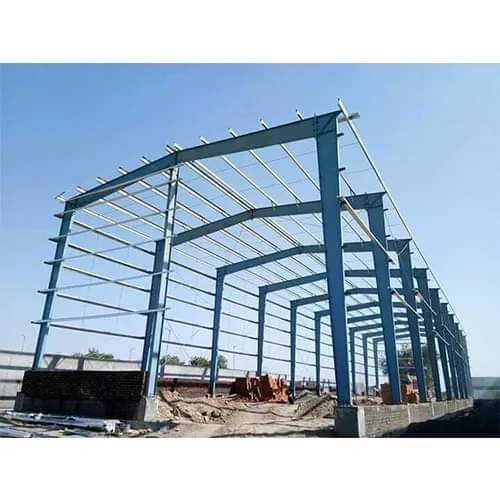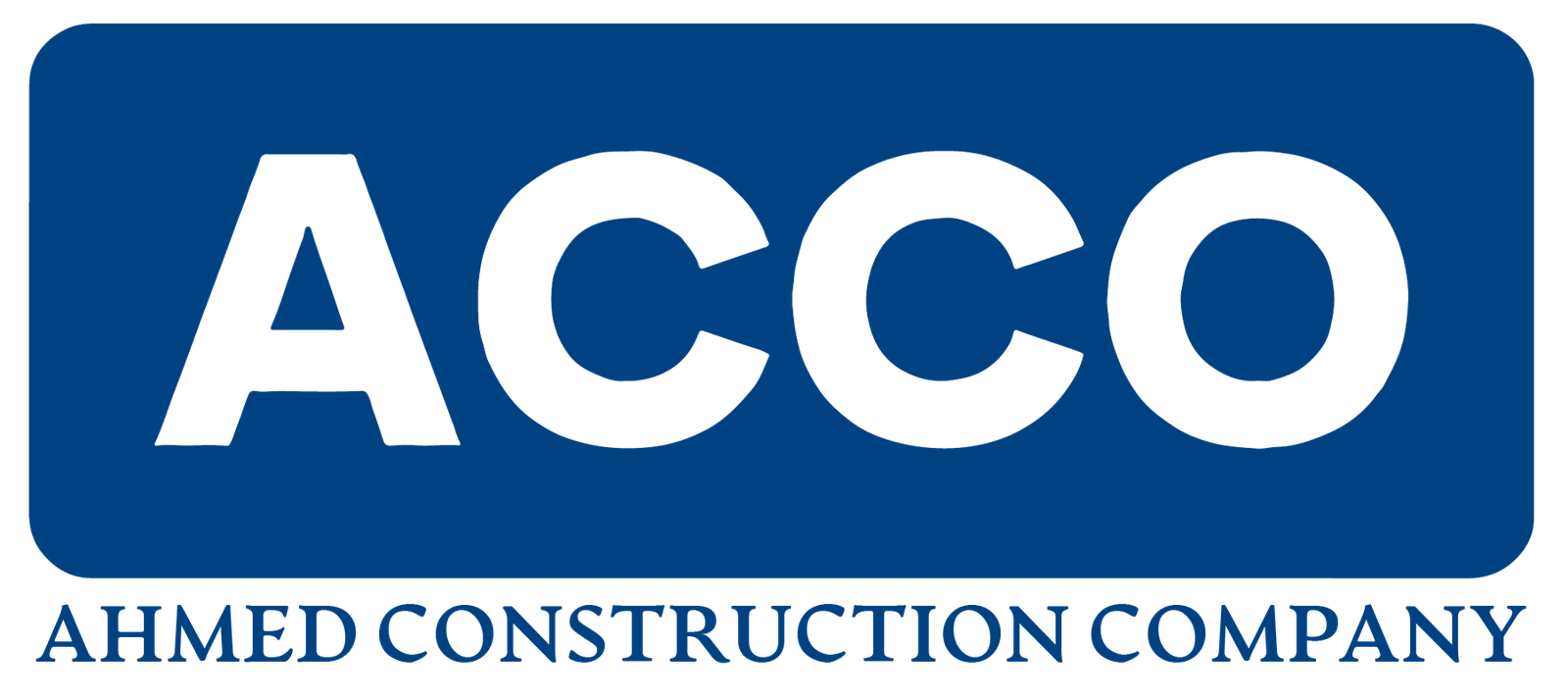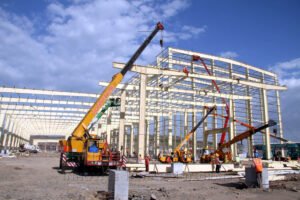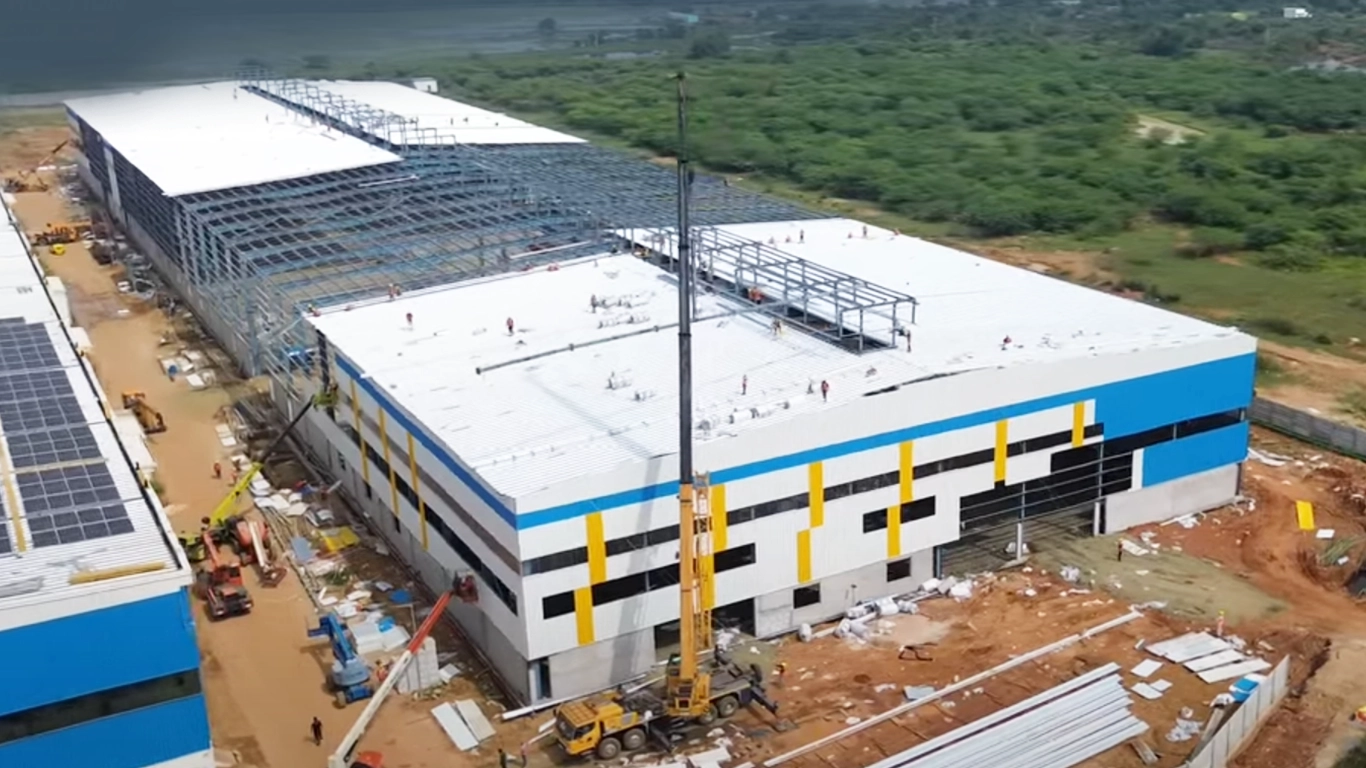
Karachi Pre-Engineered Building (Pre-Engineered Building (PEB) – prefabricated – Steel Building
(Pre-Engineered Building (PEB) – prefabricated – Steel Building – RCC Construction
Pre-Engineered Building (PEB) vs RCC Construction: The Ultimate Guide to Prefabricated Steel Buildings
In the world of modern construction, the debate between Pre-Engineered Buildings (PEB) and RCC construction has gained immense attention. As businesses and homeowners seek cost-effective, durable, and eco-friendly solutions, the rise of prefabricated steel buildings is reshaping traditional construction methods. This guide dives deep into the benefits, differences, and applications of PEB systems, RCC structures, and prefabricated steel buildings to help you make an informed decision for your next project.
What is a Pre-Engineered Building (PEB)?
A Pre-Engineered Building (PEB) refers to a type of construction where components are pre-designed, pre-fabricated, and assembled at the project site. These buildings are made of steel and designed to specific dimensions and load-bearing capacities. PEBs offer flexibility, speed, and cost-efficiency, making them a popular choice for warehouses, factories, and commercial structures.
Unlike traditional methods, where materials are transported and built from scratch onsite, PEB uses advanced technology to pre-design structural elements, reducing waste and time.
Understanding RCC Construction
Reinforced Cement Concrete (RCC) construction has been a mainstay in the building industry for decades. RCC involves using concrete as the primary construction material, reinforced with steel bars or meshes to provide strength. It is widely used for high-rise buildings, bridges, and heavy-load structures.
RCC structures, while robust, often require more time, labor, and resources compared to PEB systems. The durability and fire-resistance of RCC make it a traditional favorite, but its cost-effectiveness is being increasingly challenged by modern PEB methods.
Key Advantages of Pre-Engineered Buildings (PEB)
1. Speed of Construction
One of the most significant advantages of PEBs is their rapid assembly. Since the components are pre-designed and fabricated offsite, the installation process is faster compared to RCC. This reduces project timelines by up to 50%.
2. Cost-Effectiveness
PEBs minimize material wastage and labor costs. The prefabrication process ensures precise engineering, which translates to lower construction expenses.
3. Customization
PEBs offer unmatched design flexibility. Whether you need an industrial warehouse or a retail outlet, the design can be tailored to your specific needs.
4. Lightweight Structures
Steel is significantly lighter than concrete, reducing foundation costs. This also makes PEBs ideal for regions prone to earthquakes.
5. Sustainability
PEBs are environmentally friendly, as steel is recyclable. Moreover, the efficient use of materials contributes to sustainable construction practices.
Advantages of RCC Construction
1. Durability and Strength
RCC structures are incredibly robust, capable of withstanding heavy loads and harsh weather conditions over decades.
2. Fire Resistance
Concrete has natural fire-resistant properties, making RCC construction suitable for buildings requiring higher safety standards.
3. Versatility in Design
RCC provides architectural freedom, allowing for intricate designs and unique structural shapes.
4. Longevity
Properly maintained RCC buildings can last over a century, making them ideal for legacy projects.
PEB vs RCC: Key Differences
| Feature | Pre-Engineered Building (PEB) | RCC Construction |
|---|---|---|
| Material | Steel | Concrete + Steel Reinforcement |
| Construction Time | Faster (50% less time) | Slower due to curing and on-site work |
| Cost | Lower overall costs | Higher costs due to labor and materials |
| Flexibility | Highly customizable | Limited by material properties |
| Sustainability | Eco-friendly and recyclable | Less eco-friendly due to concrete usage |
| Weight | Lightweight, easier foundations | Heavy, requiring stronger foundations |
| Durability | Long-lasting but prone to rust | Extremely durable and fire-resistant |
Applications of Pre-Engineered Buildings
1. Industrial Warehouses
PEBs are widely used for warehouses due to their open space requirements and cost-efficiency.
2. Retail Outlets and Showrooms
With sleek designs and quick construction, PEBs are ideal for modern retail establishments.
3. Factories and Workshops
Industries prefer PEBs for their ability to accommodate heavy machinery and equipment.
4. Sports Complexes
PEBs offer expansive, column-free spaces perfect for arenas and stadiums.
5. Agricultural Storage
Farmers utilize PEBs for grain silos, cold storage, and animal shelters.
Applications of RCC Construction
1. High-Rise Buildings
The strength and durability of RCC make it ideal for skyscrapers.
2. Bridges and Dams
For structures that endure heavy loads and water pressure, RCC is indispensable.
3. Residential Housing
RCC remains the go-to option for homes, offering durability and fire resistance.
4. Public Infrastructure
Schools, hospitals, and government buildings rely heavily on RCC construction.
Which is Better: PEB or RCC Construction?
Choosing between PEB and RCC depends on project requirements. If you need a quick, cost-effective, and sustainable solution, PEB is the way to go. On the other hand, for projects demanding exceptional strength, fire resistance, and longevity, RCC is the better option.
For industrial and commercial purposes, PEB outshines RCC in terms of speed and flexibility. However, for residential and infrastructure projects, RCC remains dominant.
Factors to Consider Before Choosing Between PEB and RCC
-
Project Budget
PEBs are typically more budget-friendly compared to RCC structures. -
Time Constraints
Projects with tight deadlines benefit greatly from the rapid assembly of PEBs. -
Environmental Concerns
If sustainability is a priority, PEBs are the more eco-friendly choice. -
Structural Requirements
For load-bearing needs or unique architectural designs, RCC offers superior adaptability.
Future of Pre-Engineered Buildings in Construction
As technology advances, the demand for prefabricated steel buildings is expected to rise. The increasing focus on sustainability and resource efficiency makes PEBs a future-proof solution for construction. Furthermore, with innovations like modular construction, PEBs are evolving to cater to even more complex architectural demands.
Why ACCO Pakistan is Your Trusted Partner for PEB and RCC Projects
With decades of experience, ACCO Pakistan excels in providing tailored solutions for Pre-Engineered Buildings and RCC construction. From designing prefabricated steel structures to executing large-scale infrastructure projects, ACCO combines innovation, expertise, and quality to deliver outstanding results.
Contact ACCO Pakistan today at info@acco.com.pk or call 03228000190 to discuss your construction needs.
FAQs
What is the main difference between PEB and RCC construction?
PEB involves prefabricated steel components assembled onsite, while RCC uses concrete and steel reinforcement for on-site construction.
Why are PEBs faster to construct than RCC buildings?
PEBs are pre-designed and pre-fabricated offsite, reducing construction time significantly compared to RCC.
Are PEBs suitable for residential buildings?
Yes, PEBs are becoming increasingly popular for residential projects due to their cost-efficiency and modern design flexibility.
Is RCC better than PEB in terms of durability?
Both are durable, but RCC has an edge in fire resistance and longevity.
How sustainable are PEBs compared to RCC structures?
PEBs are more sustainable since steel is recyclable, while RCC relies on less eco-friendly concrete.
What industries benefit the most from PEBs?
Industries like warehousing, manufacturing, retail, agriculture, and sports facilities greatly benefit from PEBs.
Inbound and Outbound Link Suggestions
Inbound Links
- Link to ACCO Pakistan’s services page for PEB solutions.
- Link to ACCO Pakistan’s contact page.
Outbound Links
- Add a reference to sustainable construction practices on World Green Building Council.
- Include a link to the latest advancements in prefabrication on Construction Dive.


Karachi Pre-Engineered Building
Outline
H1: Introduction to Pre-Engineered Buildings in Karachi
- H2: What Are Pre-Engineered Buildings (PEBs)?
- H2: Why Are PEBs Gaining Popularity in Karachi?
- H3: Urban Expansion and Development
- H3: Cost-Efficiency and Time-Saving
H1: Features of Pre-Engineered Buildings
- H2: Structural Flexibility
- H2: Lightweight Construction
- H2: Customization Options
H1: Applications of Pre-Engineered Buildings in Karachi
- H2: Industrial Buildings
- H2: Commercial Complexes
- H2: Warehouses and Storage Units
- H2: Residential Solutions
H1: Benefits of Pre-Engineered Buildings
- H2: Rapid Construction
- H2: Energy Efficiency
- H2: Environmental Sustainability
- H2: Durability and Low Maintenance
H1: Challenges and Solutions for PEBs in Karachi
- H2: Climate Considerations
- H3: Heat and Humidity Management
- H2: Ensuring Quality Materials
- H2: Skilled Workforce Availability
H1: Role of ACCO in Karachi’s PEB Market
- H2: Expertise and Experience
- H2: Customized Solutions for Clients
- H2: Commitment to Sustainability
H1: Future of Pre-Engineered Buildings in Karachi
- H2: Embracing Advanced Technologies
- H2: Growing Demand in Key Sectors
H1: Conclusion
- H2: Final Thoughts on PEBs in Karachi
FAQs
- What is the average cost of a pre-engineered building in Karachi?
- How long does it take to construct a PEB?
- Are PEBs suitable for Karachi’s climate?
- Can PEBs be expanded in the future?
- Why choose ACCO for your PEB project?
Karachi Pre-Engineered Building
Introduction to Pre-Engineered Buildings in Karachi
Karachi, Pakistan’s bustling metropolitan hub, is witnessing a shift in construction trends with the rise of pre-engineered buildings (PEBs). These modern structures offer an efficient and innovative alternative to traditional construction methods. But what exactly are PEBs, and why are they becoming so popular in Karachi?
What Are Pre-Engineered Buildings (PEBs)?
Pre-engineered buildings are prefabricated structures designed and manufactured in a controlled factory environment. The components are then transported to the construction site for assembly, reducing the need for lengthy on-site work. This process ensures quality, speed, and cost efficiency.
Why Are PEBs Gaining Popularity in Karachi?
Urban Expansion and Development
Karachi’s rapid urbanization demands quicker and more cost-effective construction solutions. PEBs meet these requirements perfectly, offering durable structures that can be erected in a fraction of the time needed for traditional buildings.
Cost-Efficiency and Time-Saving
In a city where every square foot of land is valuable, PEBs minimize construction timelines and reduce labor costs, making them a preferred choice for developers.
Features of Pre-Engineered Buildings
Structural Flexibility
PEBs are highly adaptable, catering to various design and layout requirements. Whether it’s a warehouse or an office complex, these buildings can be tailored to fit specific needs.
Lightweight Construction
The materials used in PEBs, such as steel, are lightweight yet strong, ensuring easy transportation and faster assembly.
Customization Options
From exterior finishes to interior layouts, PEBs offer endless customization options to suit aesthetic and functional preferences.
Applications of Pre-Engineered Buildings in Karachi
Industrial Buildings
Karachi’s industrial sector benefits immensely from PEBs, which provide spacious and sturdy structures for manufacturing and assembly units.
Commercial Complexes
PEBs are ideal for malls, retail outlets, and office spaces, offering modern designs with large open areas.
Warehouses and Storage Units
With Karachi’s thriving trade and logistics industries, PEBs are frequently used for warehouses, ensuring secure and weather-resistant storage.
Residential Solutions
Innovative designs and quick construction make PEBs a viable option for housing projects, particularly in suburban areas.
Benefits of Pre-Engineered Buildings
Rapid Construction
PEBs drastically reduce construction time, allowing businesses to start operations sooner.
Energy Efficiency
Insulated panels and smart design elements contribute to lower energy consumption, ideal for Karachi’s hot climate.
Environmental Sustainability
The use of recyclable materials and minimal waste generation make PEBs an eco-friendly choice.
Durability and Low Maintenance
Designed to withstand harsh weather conditions, PEBs require minimal upkeep, saving costs in the long run.
Challenges and Solutions for PEBs in Karachi
Climate Considerations
Heat and Humidity Management
Karachi’s high temperatures and humidity levels demand proper insulation and ventilation in PEBs. Advanced materials and designs effectively address these challenges.
Ensuring Quality Materials
Reliable suppliers like ACCO ensure the use of high-quality steel and components, guaranteeing the longevity of the structure.
Skilled Workforce Availability
Training programs for local labor can bridge the skill gap, ensuring efficient assembly and maintenance.
Role of ACCO in Karachi’s PEB Market
Expertise and Experience
ACCO brings decades of experience in designing and constructing PEBs, making them a trusted name in Karachi’s construction industry.
Customized Solutions for Clients
From small-scale warehouses to large commercial complexes, ACCO delivers tailor-made solutions that meet client expectations.
Commitment to Sustainability
ACCO emphasizes environmentally friendly practices, using recyclable materials and energy-efficient designs.
Future of Pre-Engineered Buildings in Karachi
Embracing Advanced Technologies
The adoption of Building Information Modeling (BIM) and other technologies is set to revolutionize PEB design and construction in Karachi.
Growing Demand in Key Sectors
With increasing awareness of their benefits, PEBs are expected to dominate sectors like healthcare, education, and retail in the coming years.
Conclusion
Pre-engineered buildings are transforming Karachi’s construction landscape, offering efficient, durable, and sustainable solutions. As a trusted leader in the field, ACCO is proud to contribute to this revolution, ensuring quality and innovation in every project.
FAQs
-
What is the average cost of a pre-engineered building in Karachi?
The cost varies based on size and customization but typically ranges from PKR 2,500 to 4,000 per square foot. -
How long does it take to construct a PEB?
Most PEBs can be constructed within 6-12 weeks, depending on the complexity of the project. -
Are PEBs suitable for Karachi’s climate?
Yes, with proper insulation and ventilation, PEBs perform exceptionally well in Karachi’s climate. -
Can PEBs be expanded in the future?
Absolutely! PEBs are designed for easy scalability, allowing businesses to grow without hassle. -
Why choose ACCO for your PEB project?
ACCO offers unparalleled expertise, quality assurance, and eco-friendly solutions, making them the ideal partner for your construction needs.
Please don’t forget to leave a review.
Explore more by joining me on Patreon


